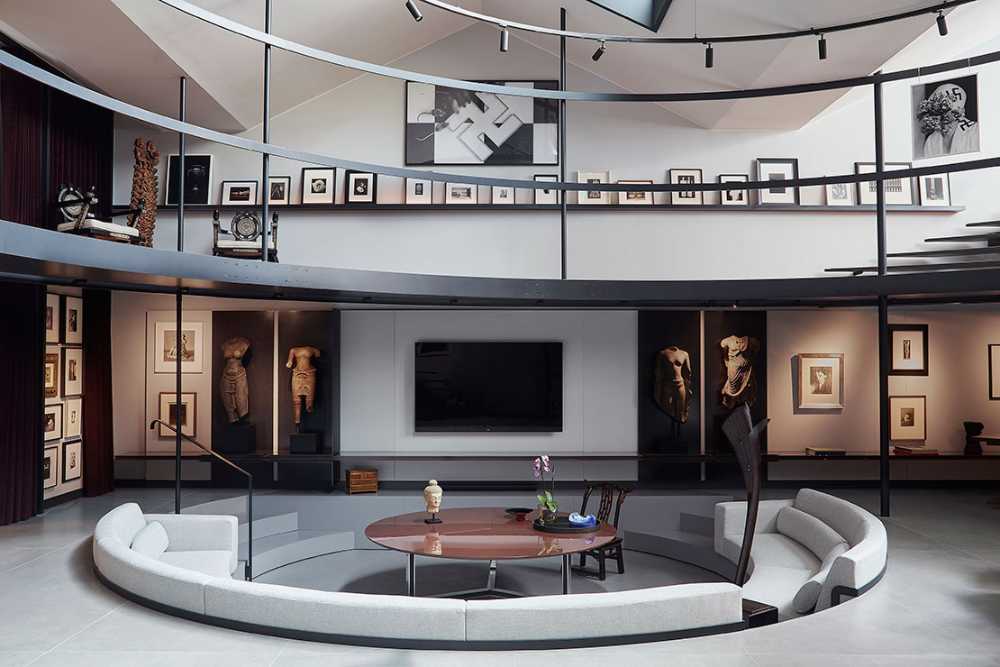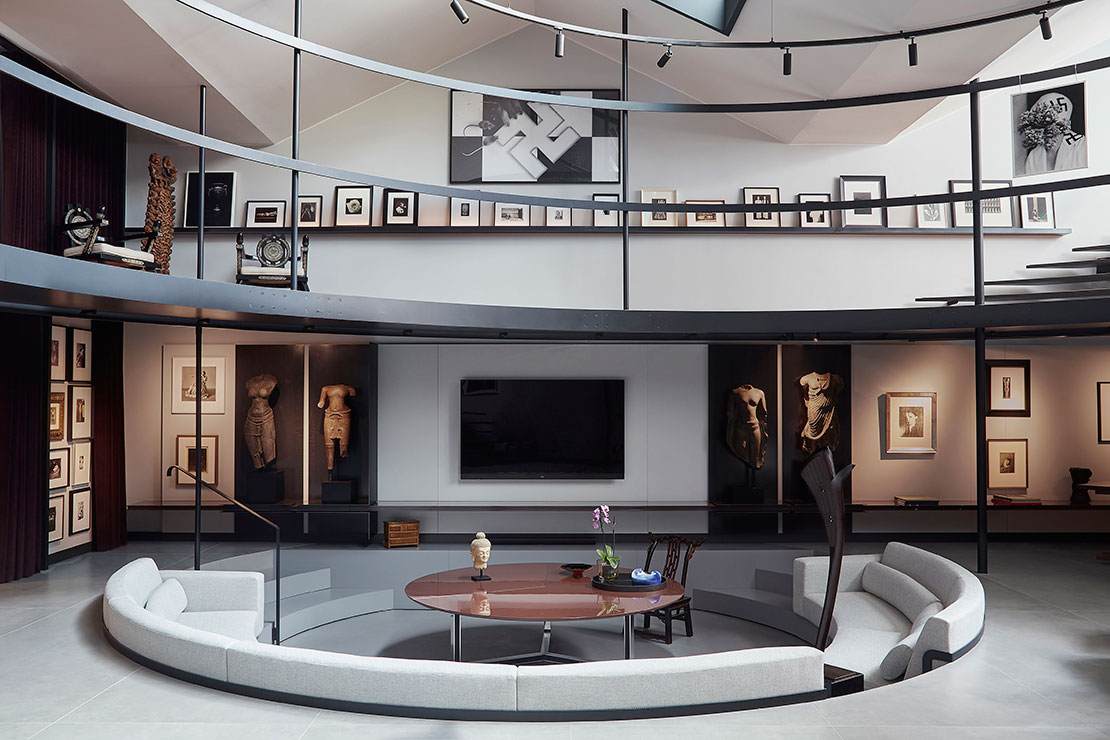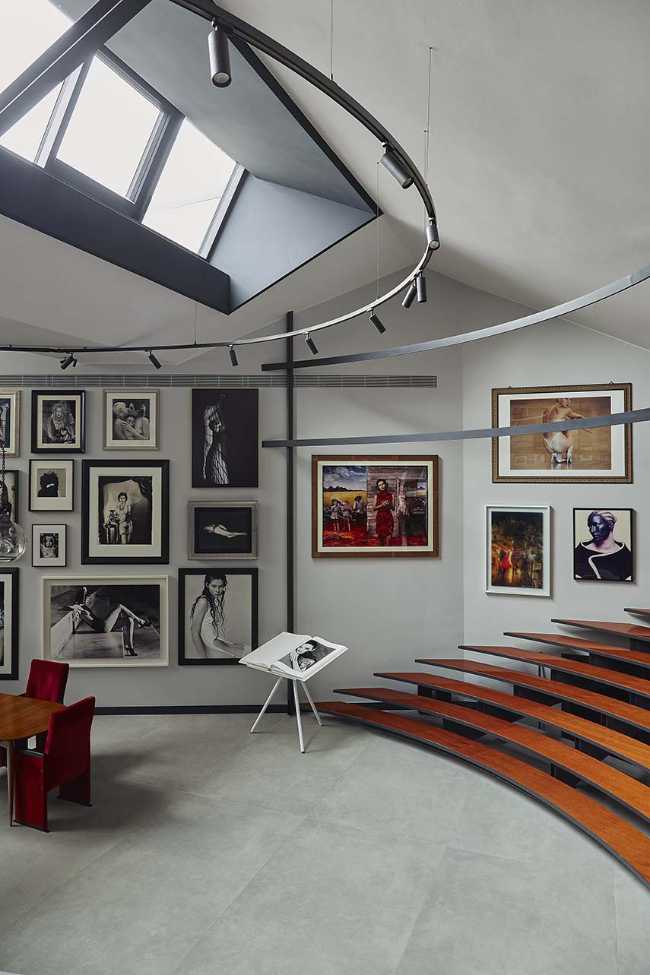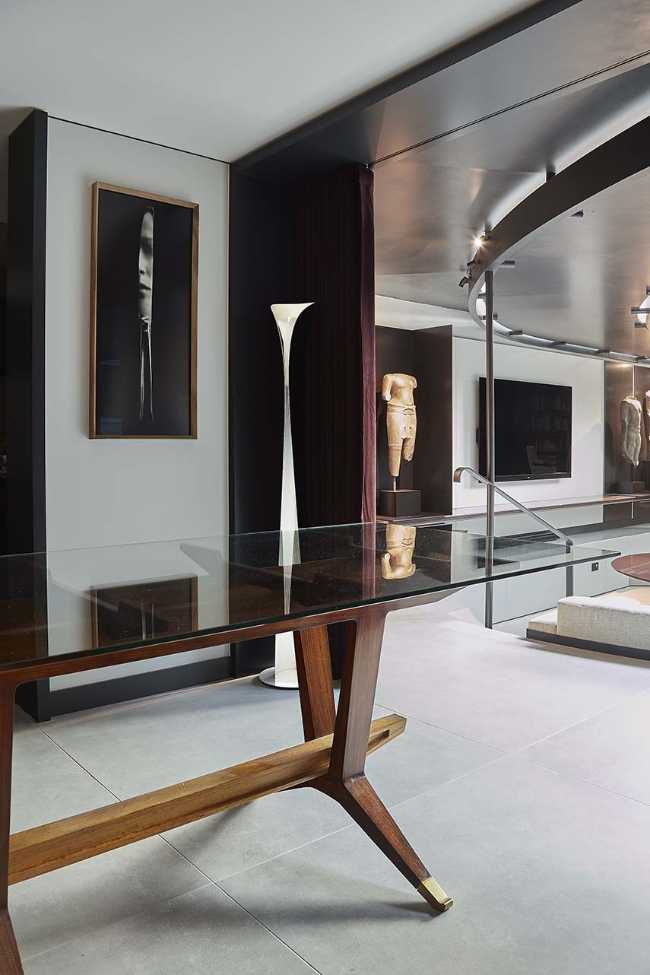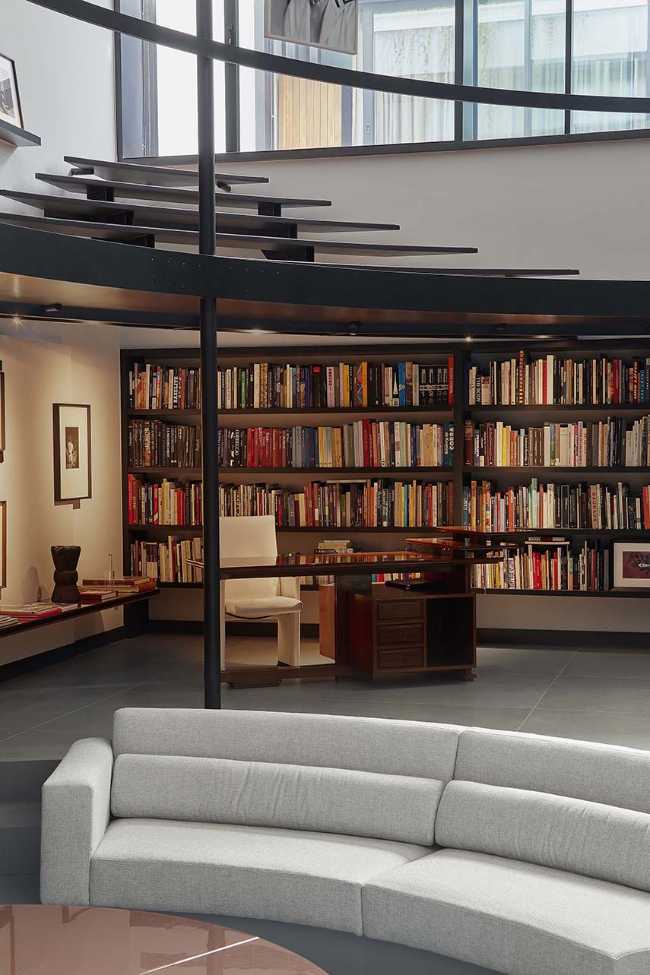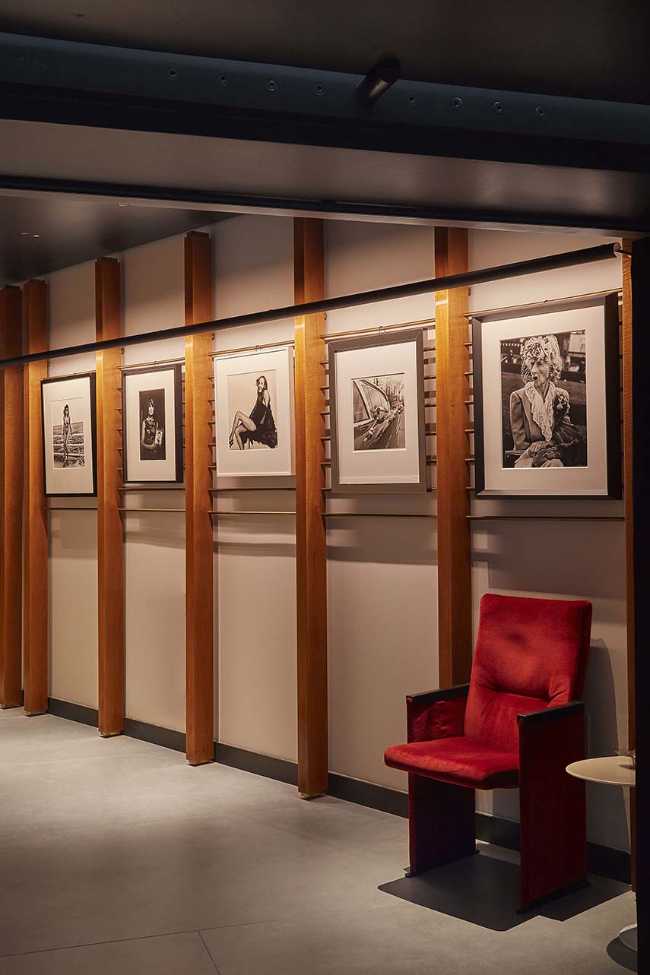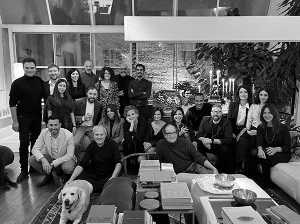A circular gesture that generates space
The entrance from the courtyard leads into a large shed-covered space, defined by arches that evoke almost ecclesiastical atmospheres, halfway between a laboratory and a sacred place. The structural complexity led to a clear primary idea: a circular gesture, initially unique and static, then evolved into two open and translated circles, capable of generating dynamic trajectories. This geometry governs the entire project and structures a large fluid space that is at once domestic, exhibition, and theatrical. A mezzanine accommodates the functions of contemporary living, maintaining total visual continuity thanks to sliding doors and retractable curtains. Walls, walkways, balustrades, and long shelves become exhibition surfaces for over 1000 square meters dedicated to photographs, sculptures, and design, while skylights and a new patio introduce zenithal light and connections with the sky in every space.



